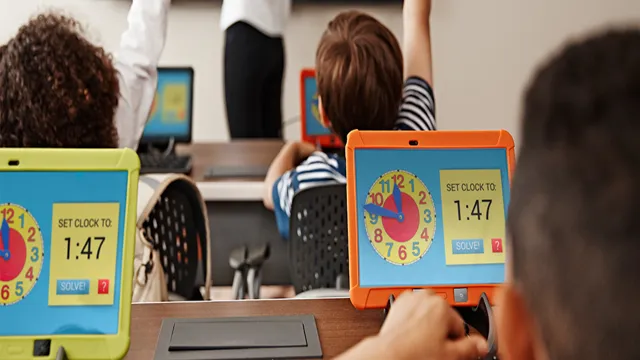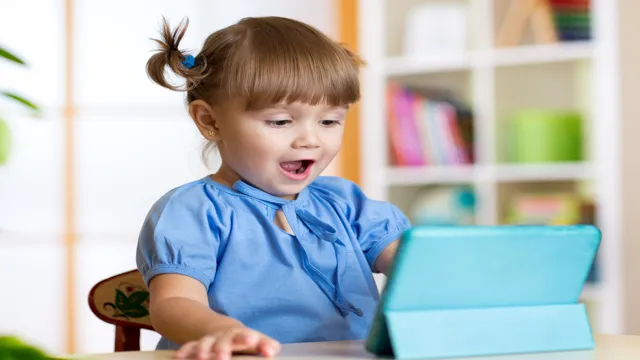Have you ever tried to get your kids to lead a healthier and more active lifestyle but struggled with motivating them? It can be a tough task to convince them to put down the game controllers and go outside to play, or choose a piece of fruit over a packet of chips. But what if you could make it fun for them? This is where gamification comes in. By incorporating game-like elements into their everyday routines, you can incentivize healthy habits and activities.
So, let’s dive deeper into the concept of gamifying kids’ lifestyle and how it can benefit both you and your child.
Why Gamify Kids’ Lifestyle?
Lifestyle gamification for kids is becoming increasingly popular for a number of reasons. Firstly, it helps to make positive lifestyle changes fun and engaging for children, who may otherwise be hesitant to adopt healthier habits. By turning healthy activities into games, children are more likely to be motivated to participate and stick to them in the long term.
Secondly, gamification can be used to address specific issues such as sedentary behavior or unhealthy eating habits. By incentivizing healthy choices and rewarding progress, kids can develop positive habits early in life that will hopefully carry on into adulthood. Finally, gamification can help to promote family bonding and make healthy living a shared experience.
When parents and children work together towards health goals, it can create a sense of teamwork and camaraderie that makes the process more enjoyable for everyone involved. In short, lifestyle gamification for kids can be a valuable tool for promoting healthy habits and making positive changes in a fun, engaging way.
Benefits of Gamification
Gamification has become increasingly popular in recent years, especially when it comes to encouraging children to live a healthy and active lifestyle. One of the main reasons why gamification has become so popular is that it helps to make healthy habits more enjoyable and engaging for children. For instance, by turning physical activity into a game, children are more likely to stay motivated and consistent with their exercise regimen.
Gamification also provides children with a sense of accomplishment and mastery as they progress through different levels and challenges. This can help to boost their confidence and self-esteem, which can have a positive impact on their overall well-being. Overall, gamification offers a fun and effective way to encourage children to develop healthy habits that can last a lifetime.

Data on Kids’ Lifestyle Issues
Gamify Kids’ Lifestyle Gamifying kids’ lifestyle may seem like a new concept, but with so many children struggling with health and behavior issues, it’s become a necessity. According to recent data, childhood obesity rates have tripled over the past two decades, and over 70% of kids spend more than two hours a day staring at screens. These statistics alone show that kids are in dire need of lifestyle changes.
But, as we all know, getting kids to make changes to their routine can be a challenge. That’s where gamification comes into play. By adding fun elements to healthy habits, children are more likely to be engaged and motivated to make healthier choices.
Think of it like a game where the end goal is to lead a healthy and active lifestyle. With the right incentives and rewards, kids can learn healthy habits and maintain them for a lifetime. So, gamifying kids’ lifestyle may seem unconventional, but it’s a necessary step in promoting healthy behaviors and ultimately improving their quality of life.
Gamification Strategies
Lifestyle gamification for kids is a clever strategy that parents can use to encourage children to develop healthy habits and behaviors. By using game elements and mechanics, parents can make mundane activities, such as chores and exercise, more engaging and enjoyable for children. For example, parents can use reward systems or points-based incentives to motivate children to complete tasks or adopt healthy habits.
Additionally, setting specific goals and tracking progress can help children develop a sense of achievement and pride, which can lead to increased motivation. Lifestyle gamification for kids can be a fun and effective way to promote healthy behaviors while also fostering a positive and enjoyable environment for children to learn and grow in.
Achievement-based Rewards
Achievement-based rewards are an effective gamification strategy that encourages users to reach set objectives. By offering prizes, badges, or recognition for specific achievements, it pushes individuals to strive for completion. The prizes can vary, such as discounts, exclusive content, or access to new levels.
This approach is beneficial for businesses because it associates their brand with achievement and recognition, creating a positive experience for users. This strategy appeals to our competitive nature as humans, as we aim to collect as many rewards as possible. An excellent example is the achievements feature in video games, which shows the player’s progress and unlocks additional content.
These rewards continuously motivate players to complete challenges and progress through the game. Therefore, implementing achievement-based rewards into a business’s gamification strategy can create an engaging and motivating experience for users.
Incorporating Technology
Gamification is an effective strategy for incorporating technology into various fields, including education, fitness, and even business. Essentially, it involves the use of game-like elements, such as points, badges, and leaderboards, to encourage user engagement and motivate behavior change. For example, in education, gamification can be used to make learning more enjoyable and interactive, while in fitness, it can be used to motivate people to exercise regularly.
Businesses can use gamification to increase employee productivity and engagement by setting up friendly competitions and reward systems. By incorporating gamification strategies, you can make tasks that would otherwise be mundane or difficult more enjoyable, which can lead to increased motivation and improved outcomes.
Collaborative Gaming
Gamification Strategies In collaborative gaming, gamification strategies are essential to keeping the players engaged and motivated. Gamification involves incorporating game-like elements into non-game contexts to make the experience more enjoyable and rewarding. One common strategy is the use of points, badges, and leaderboards to track progress and encourage competition.
This can also help to build a sense of community within the game, as players work together to achieve common goals. Another effective strategy is the use of rewards, such as unlocking new levels or special items. Players are often willing to put in extra effort when they know there’s a tangible benefit waiting for them.
Finally, social engagement is increasingly important in gamification. Games that allow players to connect with one another through online communities or social media platforms can foster a sense of teamwork and camaraderie, which in turn creates a more enjoyable and fulfilling gaming experience. By leveraging gamification strategies, collaborative gaming can become an even more engaging and rewarding activity for players of all skill levels.
Successful Examples
Lifestyle gamification for kids has been quite successful in recent years, with many examples to tout. One such example is the popular mobile app ChoreMonster. The app assists parents in creating a fun and rewarding atmosphere for household tasks, optimizing the concept of gamification to incentivize children to complete chores.
Children receive points and prizes upon completion of tasks, with an added bonus of being able to trade in those points for rewards of their choice. Another great example is the online platform Classcraft, which transforms educational lessons into interactive games that encourage children and provide them with the chance to earn points and rewards. Emphasizing imagination and strategy over traditional academic instruction, Classcraft fosters an enjoyable and fun environment that promotes learning and critical thinking.
Through the use of gamification, these lifestyle applications provide children with the incentive to engage in otherwise dull activities by presenting them with the opportunity to gain rewards, level up, and experience a sense of accomplishment.
Fitness Trackers for Kids
Fitness trackers for kids are becoming increasingly popular as parents prioritize the health and well-being of their children. One successful example is the Garmin vivofit jr. 3, which not only tracks daily activity but also motivates kids with interactive adventures and games.
Another example is the Fitbit Ace 2, which has a colorful design and encourages healthy habits through daily reminders. These fitness trackers can help children understand the importance of exercise and staying active in a fun and engaging way. Plus, parents can use the data collected to celebrate their child’s progress and set achievable goals.
By introducing fitness trackers to kids, parents are setting the foundation for a healthy lifestyle that can last a lifetime.
Gamified Chore Charts
Gamified chore charts have become increasingly popular in households across the world as a way to encourage children to complete tasks in a fun and interactive way. One successful example of this is the “Chore Monster” app, which allows children to earn points and rewards for completing chores. The app includes a cute monster avatar that the child can customize and a list of chores that the parents can assign with corresponding point values.
Another successful gamified chore chart is the “Savings Spree” board game, which teaches children about budgeting and saving money while also completing household tasks. Both of these examples show how gamification can not only make chores more enjoyable for children, but also teach important life skills in the process. By incorporating elements of play and reward, children are more likely to stay engaged and motivated to complete their chores.
Conclusion
In conclusion, lifestyle gamification for kids is a revolutionary approach to helping young children develop healthy habits and a positive mindset. By turning everyday activities into fun and engaging games, kids are more likely to enjoy and stick to healthy behaviors. With technology advancements, gamification has become a powerful tool that can improve the lives of children by promoting physical activity, healthy eating, good sleep, and more.
Lifestyle gamification not only creates a healthy lifestyle for children but also makes it an enjoyable experience. So, let’s gamify life and make healthy living a playful adventure for our little ones!”
FAQs
What is lifestyle gamification for kids?
Lifestyle gamification for kids involves using game-like features and design to encourage children to adopt healthy lifestyle habits, such as exercising, eating well, and practicing good hygiene.
How does lifestyle gamification for kids work?
Lifestyle gamification for kids typically involves the use of digital apps or tools that incorporate game-like elements, such as points, rewards, and challenges, to motivate children to engage in healthy behaviors.
What are some examples of lifestyle gamification for kids?
Some popular examples of lifestyle gamification for kids include apps like ChopChop, which teaches kids how to cook healthy meals through interactive tutorials and challenges, and GoNoodle, which uses exercise-based games to encourage physical activity among children.
Is lifestyle gamification for kids effective?
Studies have shown that lifestyle gamification for kids can be an effective tool for promoting healthy habits and improving health outcomes. By making healthy behaviors fun and engaging, kids are more likely to stick with them over time.
